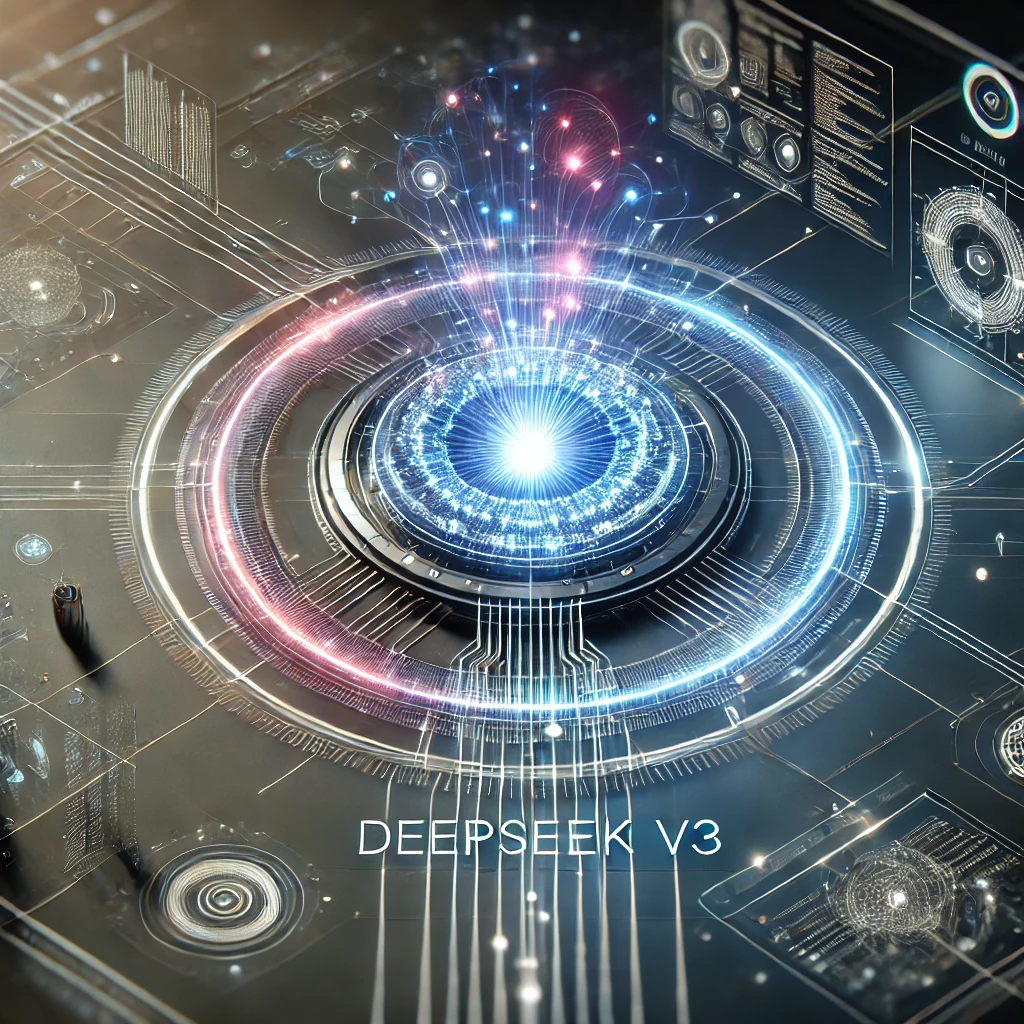The artificial intelligence (AI) industry has become a battleground for global innovation, with tech giants constantly vying for dominance. In recent years, OpenAI and Google have led the pack, setting the standard for cutting-edge AI technologies. However, the emergence of DeepSeek V3, a revolutionary Chinese AI model, has sent shockwaves through the industry. With its groundbreaking efficiency, market disruption, and geopolitical implications, DeepSeek V3 has become a pivotal moment in AI development.
This article delves into the rise of DeepSeek V3, its impact on the market, cybersecurity challenges, open-source approach, and the broader geopolitical ramifications. It highlights why Western AI investors are now scrambling to respond to this disruptive force.
The Rise of DeepSeek V3

Background of DeepSeek AI and Its Founders
DeepSeek AI, a Chinese-based AI company, was founded with the mission of democratizing artificial intelligence. The company has quickly risen to prominence, challenging established Western giants with its innovative and cost-effective models. DeepSeek’s founders, a group of seasoned AI researchers and entrepreneurs, leveraged their expertise to create models that prioritize efficiency and accessibility.
Key Features and Capabilities of DeepSeek V3
DeepSeek V3 stands out for its remarkable performance despite being trained on significantly less hardware. Utilizing a few thousand Nvidia H800 GPUs, capped in performance, the model delivers results comparable to or above those of OpenAI’s GPT-4 and Google’s Bard. Key features include:
- Advanced Natural Language Processing (NLP): DeepSeek V3 excels in understanding and generating human-like text.
- Multi-language Proficiency: It supports a wide range of languages, making it highly versatile.
- Cost-Efficiency: The model’s ability to deliver high performance with limited resources sets it apart.
- Open-Source Availability: Unlike its Western counterparts, DeepSeek V3 is accessible to developers worldwide.
Comparison with Western AI Models
While OpenAI and Google rely on vast computational resources and proprietary technologies, DeepSeek V3’s efficiency demonstrates that powerful AI can be achieved with fewer resources. This shift challenges the assumption that superior AI requires massive investment in hardware, redefining industry standards.
Training Efficiency and Cost-Effectiveness
Details on Training with Limited Hardware
DeepSeek V3 was trained using Nvidia H800 GPUs, which are capped in performance due to export restrictions. Despite this limitation, the developers optimized their training algorithms to achieve state-of-the-art results. This approach not only showcases technical ingenuity but also highlights the potential for cost-effective AI development.
Cost Comparison with Western AI Models
The training costs of DeepSeek V3 are significantly lower than those of its Western counterparts. OpenAI’s GPT-4, for instance, required extensive hardware and computational power, driving up costs. By contrast, DeepSeek’s resource-efficient methods make it a more economical alternative, appealing to businesses and developers seeking affordable AI solutions.
Impact on the AI Market and Investor Reactions
The cost-effectiveness of DeepSeek V3 has sent ripples through the market, causing a significant drop in the stock prices of major AI companies like Nvidia and Oracle. For instance, Nvidia experienced a sharp decline, with its stock price dropping by as much as 17%, resulting in a loss of nearly $600 billion in market capitalization. Similarly, Broadcom’s stock fell by approximately 17%, and other tech firms, including Oracle and Cisco, also faced notable declines. Investors are increasingly concerned about the implications of a model that delivers better results at a fraction of the cost. This development has forced Western companies to reassess their strategies and adapt to the new competitive landscape.
Market Impact and Investor Panic
Stock Market Reactions to DeepSeek V3’s Release
The release of DeepSeek V3 triggered a sharp decline in the stock prices of key players in the AI and semiconductor industries. Nvidia, a leader in GPU manufacturing, and Oracle, known for its AI cloud services, saw their market valuations drop as investors grappled with the potential disruption posed by DeepSeek. The cumulative effect of these declines has been substantial, with estimates suggesting that around $1 trillion in market value was wiped off U.S. stocks following the announcement of DeepSeek V3.
Statements from Industry Analysts and Investors
Industry analysts have described DeepSeek V3’s emergence as a game-changer. According to one analyst, “DeepSeek’s cost-effective model challenges the dominance of Western AI giants and sets a new benchmark for efficiency.” Investors have echoed similar sentiments, expressing concern over the need for Western companies to innovate quickly or risk losing their competitive edge.
Potential Long-Term Effects on the AI Industry
In the long term, DeepSeek’s success could lead to a more decentralized AI landscape. Western companies may need to adopt cost-efficient practices and embrace open-source models to remain relevant. Additionally, this shift could democratize AI development, enabling smaller players to compete on a global scale.
Cybersecurity Concerns
Recent Cyberattack on DeepSeek
DeepSeek recently faced a cyberattack that disrupted its operations, resulting in temporary user registration limits and prolonged website outages. The attack highlighted the vulnerabilities inherent in AI platforms, particularly those that are open source and widely accessible.
Impact on User Registrations and Website Stability
The cyberattack temporarily halted new user registrations and caused significant downtime, affecting the platform’s reliability. Despite these challenges, DeepSeek’s team acted swiftly to mitigate the damage and restore normal operations, demonstrating resilience in the face of adversity.
Broader Implications for AI Platform Security
The incident underscores the importance of robust cybersecurity measures in the AI industry. As AI platforms become more integral to various sectors, ensuring their security will be paramount. Companies must invest in advanced security protocols to safeguard their systems and maintain user trust.
Open Source and Accessibility
Explanation of DeepSeek’s Open-Source Approach
DeepSeek V3 and its R1 model are open source, making them accessible to developers worldwide. This approach contrasts sharply with the proprietary nature of Western AI models, which often limit access to a select group of users.
Benefits and Challenges of Open-Source AI Models
The open-source nature of DeepSeek V3 offers several advantages:
- Accessibility: Developers across the globe can use and improve the model.
- Collaboration: Open-source models foster innovation through collective input.
- Cost Savings: Businesses can leverage the model without incurring licensing fees.
However, there are challenges as well, including potential misuse and heightened security risks. Ensuring ethical use and robust safeguards will be critical to addressing these concerns.
Comparison with Proprietary Models from Other Companies
Proprietary models from companies like OpenAI and Google prioritize control and monetization, often at the expense of accessibility. While this approach ensures profitability, it limits the broader adoption of AI technologies. DeepSeek’s open-source model challenges this paradigm, promoting inclusivity and collaboration.
Geopolitical Implications
Discussion on U.S.-China Competition in AI
The success of DeepSeek V3 has reignited debates about U.S.-China competition in the AI sector. Some experts have likened this moment to the “Sputnik moment,” emphasizing the need for Western countries to accelerate their AI development efforts.
Expert Opinions on DeepSeek’s Impact
AI researchers and geopolitical analysts agree that DeepSeek’s emergence marks a turning point. According to one expert, “DeepSeek demonstrates that China is not only catching up but also leading in certain aspects of AI development.” This shift could have profound implications for global power dynamics.
Potential Responses from Western AI Companies and Governments
Western companies and governments are likely to respond with increased investments in AI research and development. Policies promoting innovation and collaboration may also emerge as part of broader efforts to maintain competitiveness. Additionally, fostering international partnerships could play a crucial role in countering the growing influence of Chinese AI.

DeepSeek V3’s rise has disrupted the AI industry, challenging established norms and prompting a reevaluation of strategies among Western companies. Its cost-effective approach, open-source nature, and geopolitical implications highlight the need for innovation and adaptability in this rapidly evolving field.
As the industry grapples with these changes, the future of AI development promises to be more inclusive and dynamic. DeepSeek V3’s success serves as a reminder that efficiency and accessibility can redefine what’s possible in AI. For investors, developers, and policymakers, the message is clear: the AI race is far from over, and staying ahead requires embracing new paradigms and possibilities.
